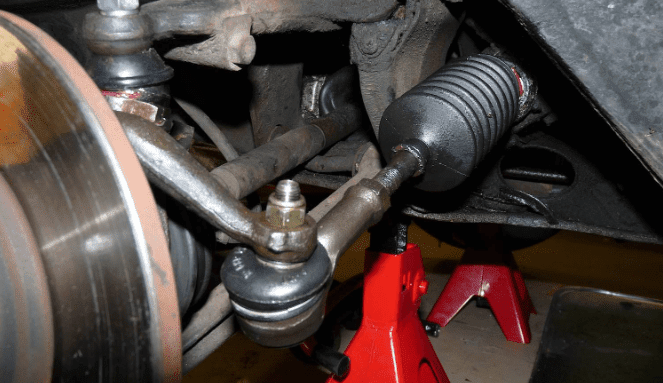Tie rod function in car steering system
The tie rod in the steering system plays a significant role so that the vehicle can drive stably and is easy to control. The tie rod itself is located between the steering gearbox (steering rack) and the front wheel knuckle and becomes the link between them.
The tie rods' shape and naming depend on the steering system used. In a steering system that uses a steering rack, two types of tie rods, namely the rack end (which is more commonly known as the long tie rod) and the tie rod end.
The long tie rod is installed and connected to the steering rack's end, while the tie rod end is attached and connected to the knuckle where the car wheel/tire is located. Both tie rods have an essential function for the steering system.
So what are the functions of the tie rod on this steering system? Next, we will share 3 tie rod functions in the car steering system.
1. Forwarding the steering wheel rotation to the front wheel
The first tie rod function is to continue the steering wheel rotation to the front wheels. The steering wheel's rotating motion made by the driver when turning the steering wheel will flow towards the steering gearbox and turn into a pulling or pushing motion.
This movement is continued by both tie rods to pull or push part of the front wheel knuckle so that the front wheel can shift direction and turn according to the steering wheel's direction.
2. Become a place to set the toe angle of the front wheel
In addition to continuing the steering wheel to the front wheels, the tie rod's next function is to adjust the front wheels' toe angle. Toe is the difference between the front and rear sides of the wheel when viewed from above the vehicle.
Toe itself is divided into 2, namely Toe-in and Toe-out. This toe functions to regulate the front wheels to roll straight and stably, but it can also prevent uneven wear on the tires.
Adjusting the nut and thread on the connection between the long tie rod and the tie rod end can arrange this toe angle. That is, by lengthening the thread between the long tie rod and the tie rod end to obtain the required toe angle.
Also Read3. Reduce vibration from the wheels
The last tie rod function is to dampen vibrations from the wheels, so they don't reach the steering wheel. Yes, as we already know, the long tie rod and tie rod ends are ball joints that can move in several directions.
This ball joint will break the movement up and down or to the right and left of the wheel so that the movement does not spread and reach the steering wheel. The long tie rod (rack end) will dampen up and down wheel vibrations, while the tie rod end functions to dampen vibrations to the right and left that occur on the wheels.
That way, the wheels can move freely but do not interfere with the steering system's function so the driver can fully control the steering wheel easily and comfortably.
